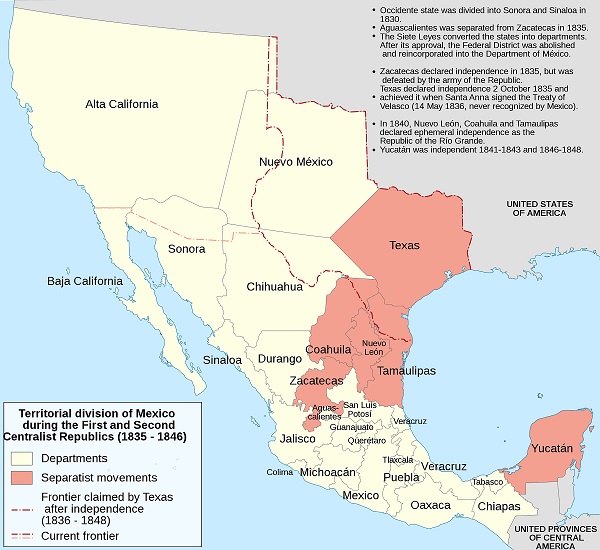How Mexico Lost Texas
The Anglo-American colonization of Texas primarily happened under Mexican, not Spanish rule. This process was spearheaded by Americans, with Stephen F. Austin being a central figure. Initially, Austin, who considered himself a loyal Mexican citizen, strived to curb the momentum towards secession until his unjust detention by the Mexican authorities.
Contrary to a view held by some that the Anglo settlers opposed the 1824 Mexican Constitution, mostly due to its implications on slavery, the fact is that slavery became a significant issue only after the revolution. It was later with the emergence of prosperous cotton plantations along the Brazos River in the mid-1800s that elevated the importance of slavery in Texas. Before this, a majority of Texas settlers were financially disadvantaged and incapable of owning slaves. Some parts of Texas, such as the central Texas Hill Country, were predominantly against slavery, even during the U.S. Civil War.

The Anglo settlers generally complied with Mexican laws, including the directive mandating conversion to Catholicism. The significant catalyst for the Texas uprising against the Mexican government was Santa Anna’s decision to revoke the progressive 1824 Mexican Constitution. The “Texians,” as they preferred to be called, largely favored the 1824 Mexican Constitution, given their familiarity with the more liberal U.S. Constitution. Their support for the 1824 constitution was symbolized by the rebel flag at the Alamo, which featured the Mexican tricolor and the year “1824.”
The Texas revolutionary forces incorporated several Mexican-born volunteers, and the first interim Vice-President of the Republic of Texas, Lorenzo de Zavala, was born in Mexico.
Like several other parts of Mexico, such as Yucatan, Zacatecas, and Coahuila, the Mexican state of Texas instigated a violent uprising against the dictator Santa Anna after he rescinded the 1824 constitution. However, while Santa Anna managed to brutally subdue uprisings in other states, he was defeated and captured in Texas by the forces of Gen. Sam Houston at the Battle of San Jacinto, leading to the signing of the Treaty of Velasco and the independence of Texas.

Following roughly a decade as an independent republic, Texas successfully sought admission into the United States. The U.S. government responded by sending troops to safeguard southern Texas from Mexican attacks, which had begun soon after the Treaty of Velasco was ratified. These attacks were in direct violation of the treaty, thus making the Mexican claim that Texas violated the treaty by seeking U.S. statehood seem disingenuous. Indeed, Texas’ pursuit of statehood was a strategic move to avoid potential re-annexation by Mexico, much like Ukraine’s bid to join the EU and NATO to ward off a potential Russian annexation.
Mexico’s fury over Texas’s inclusion into the Union led to the Mexican army attacking the United States across the Rio Grande, triggering the Mexican-American War. The victory of the U.S. in this war and the signing of the Treaty of Guadalupe Hidalgo in 1848 confirmed Texas’ position and allowed the U.S. to acquire more western territory from Mexico in exchange for settling Mexico’s international debts and a supplementary cash payment to the Mexican government, which collectively amounted to approximately $675 million (in 2023 dollars).
